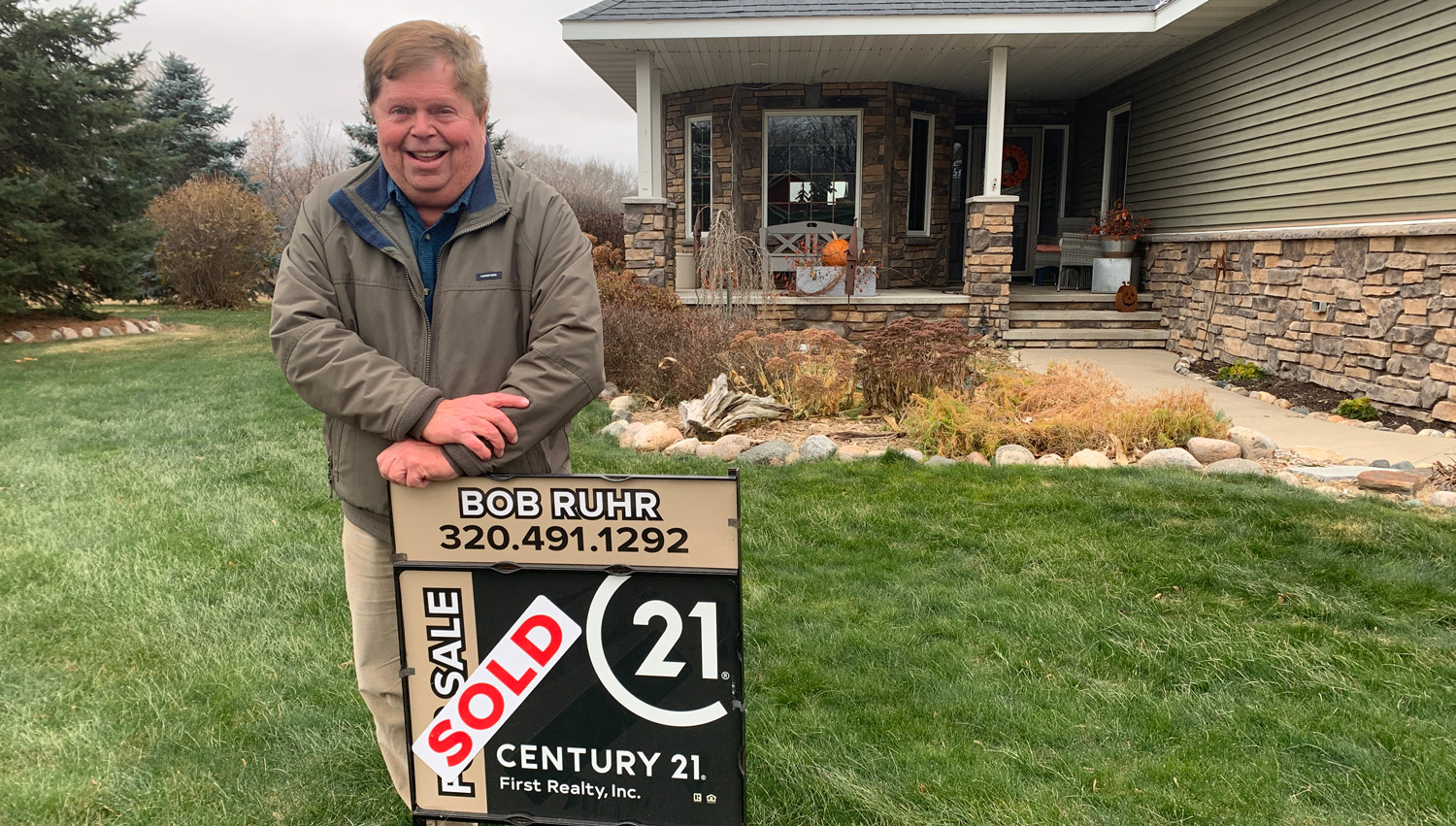Sold on an Amulet Device Implant with EchoPixel
Heart & Vascular Care“When I learned I was at higher risk for stroke, I was anxious to do whatever was necessary to correct it.”
Bob Ruhr of Alexandria has worked in real estate for 45 years, enjoying the chance to meet and help people. “For many people, a home is the biggest investment they have. So, buying or selling their home is a life changing event,” said Bob.
Knowing the impact of big decisions, Bob didn’t hesitate when he saw an ad for a heart device that could change his life. At his next cardiology appointment, he asked about the WATCHMAN, a device that seals off the opening of the heart’s left atrial appendage (LAA) to prevent blood clots from forming and traveling to the brain, potentially causing a stroke. The risk of stroke is five times higher for people who, like Bob, have atrial fibrillation (AFib) because an irregular heartbeat tends to pool blood and form clots, especially within the LAA.
“When I learned I was at higher risk for stroke, I was anxious to do whatever was necessary to correct it,” said Bob. Many people with AFib take lifelong blood thinners to reduce that risk, but it comes with an increased risk of bleeding, unpleasant side effects and cost. If a WATCHMAN implant is successful, patients no longer need blood thinners and stroke risk is reduced. The CentraCare Heart & Vascular Center (CCHVC) has successfully implanted more than 600 WATCHMAN devices since 2016.
After talking with Cardiologist Tim Schuchard, MD, CCHVC, who provides cardiac outreach in Alexandria, Bob learned he had another option similar to WATCHMAN. The research department at CCHVC was currently enrolling patients in CATALYST, a study that compares the safety and effectiveness of an Abbott device called Amulet to that of blood thinners. CentraCare is one of 150 sites in the world participating in the study, with the CCHVC study being led by Benjamin Johnson, MD.
“Being involved in clinical research has helped the Heart Center recruit some of the best and brightest cardiologists,” said Dr. Schuchard. “Our dedication to research shows we are committed to providing evidence-based cardiology and one of the big reasons why U.S. News & World Report recently ranked us 30th in the nation.” CCHVC has participated in 35 to 45 clinical trials per year, for the past 22 years, giving 2,000+ patients access to the latest cardiovascular treatments.
Bob didn’t realize CCHVC took part in research. “I knew it was a good heart hospital, but I didn't know that they did research outside of their day-to-day work,” said Bob. “The research team was very pleasant and thorough — they explained why they were doing the study and answered any questions.” After getting more details, Bob agreed to be part of a randomized trial, meaning that once he met certain criteria, he would be randomly chosen to receive the device or remain as part of the control group, taking blood thinners into the future.
“I crossed my fingers that when the time came for randomly selecting people for the device, that I would be chosen,” said Bob. “On the day of the drawing, I was happy to hear I was chosen because the odds of not being selected are greater than being selected.”
Bob’s procedure was scheduled for October 28. He soon learned his involvement with innovative technology went beyond the Amulet. He learned his procedure would be performed by Jacob Dutcher, MD, and done with the support of EchoPixel holographic therapy guidance (HTG), a novel 4D hologram imaging system that would help guide the implant of the Amulet device within the LAA.
Bob’s procedure was a success, and he became the first patient in the world to receive an Amulet with the assistance of EchoPixel HTG.
Bob was impressed with his care at CCHVC. “It's a huge facility, and yet it operates like a fine-tuned machine,” he said. “I had all these tests, and each staff person came in and ‘click, click, click’ everyone did their thing without any gaps in time. It amazes me what these people can do. You can come in during the morning, have someone plug up part of your heart without having to open your chest and then you walk out in late afternoon — and your heart is different. Technology has come a long way.”
Back at home, Bob recovered quickly and without incident. He is now enjoying time boating and fishing with his close-knit family — his incentive for taking a chance on the new technology.
While Bob said he would have been disappointed if he hadn’t been selected for the procedure, he was fully vested in continuing with the research study. He knew his participation could help others in the future, which for him, was an easy decision.
